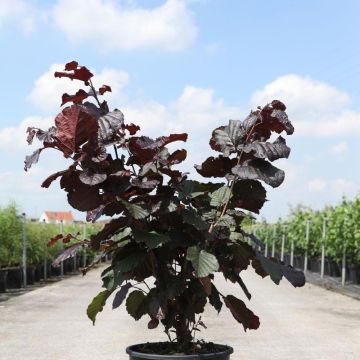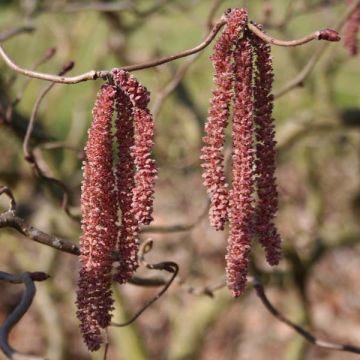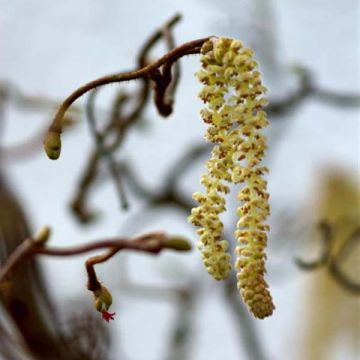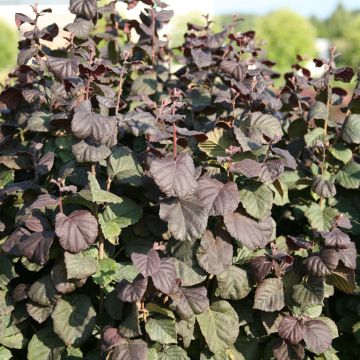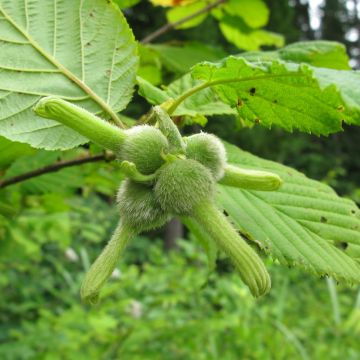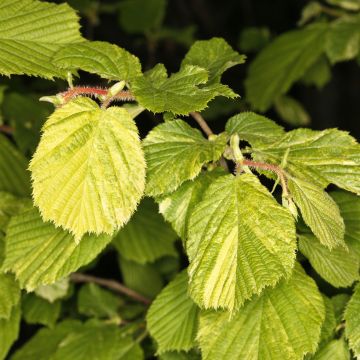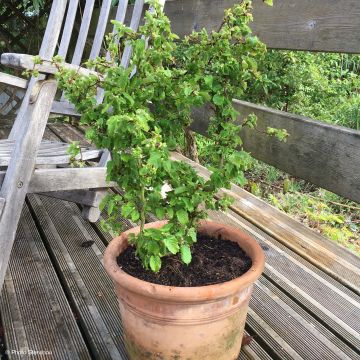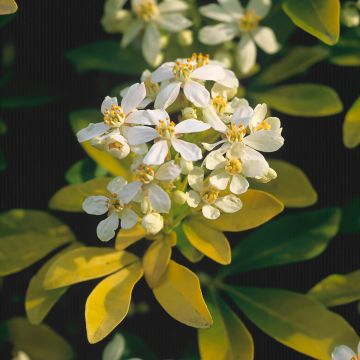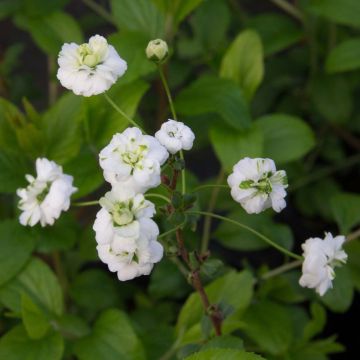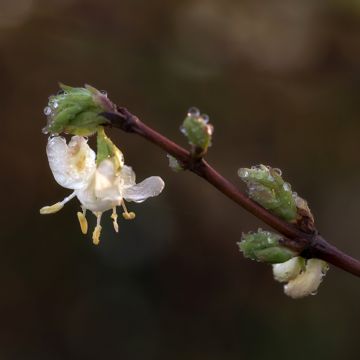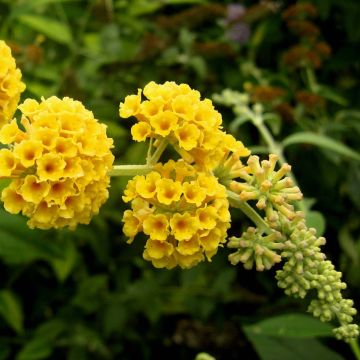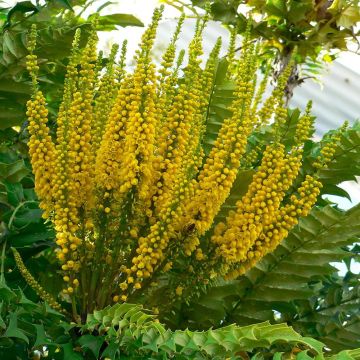

Corylus avellana Syrena - Common Hazel
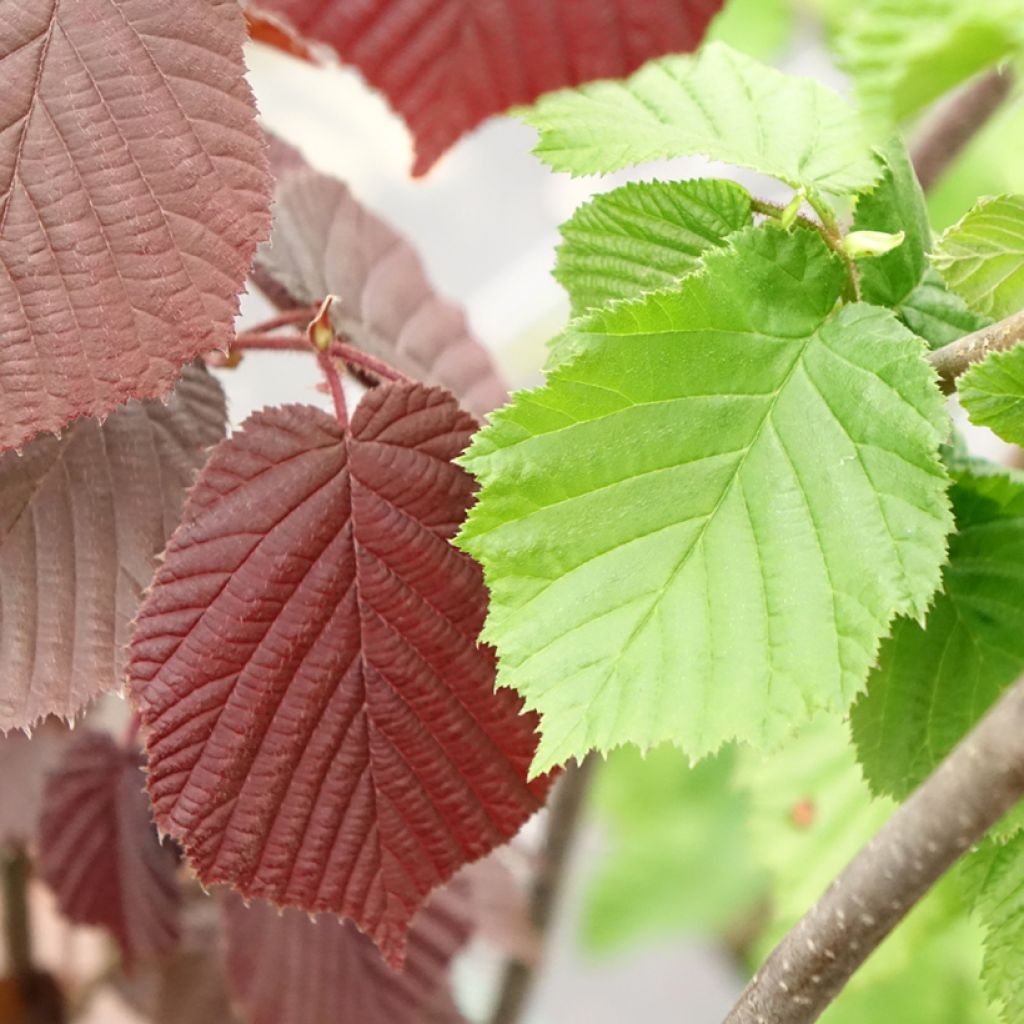

Corylus avellana Syrena - Common Hazel
Corylus avellana Syrena - Common Hazel
Corylus avellana Syrena
Hazel, Common Hazel
Special offer!
Receive a €20 voucher for any order over €90 (excluding delivery costs, credit notes, and plastic-free options)!
1- Add your favorite plants to your cart.
2- Once you have reached €90, confirm your order (you can even choose the delivery date!).
3- As soon as your order is shipped, you will receive an email containing your voucher code, valid for 3 months (90 days).
Your voucher is unique and can only be used once, for any order with a minimum value of €20, excluding delivery costs.
Can be combined with other current offers, non-divisible and non-refundable.
Home or relay delivery (depending on size and destination)
Schedule delivery date,
and select date in basket
This plant carries a 24 months recovery warranty
More information
We guarantee the quality of our plants for a full growing cycle, and will replace at our expense any plant that fails to recover under normal climatic and planting conditions.
Would this plant suit my garden?
Set up your Plantfit profile →
Description
Corylus avellana 'Syrena' is a Polish hazel variety that is as ornamental as it is delicious. It is a vigorous bush with purple foliage that catches the eye in spring. In February-March, its bare branches are adorned with yellow, pendulous catkins that sway in the slightest breeze. In late summer, delicious red hazelnuts can be harvested, easily spotted against the now green foliage or when they have fallen to the ground. The harvests are relatively regular, but to ensure a good yield, a pollinating variety such as 'Merveille de Bollwiller' or 'Cosford' will be necessary. 'Syrena' is considered a good pollinator for other hazelnut trees. This variety is susceptible to aphids.
Corylus avellana belongs to the Betulaceae family, just like the birch. It is native to temperate zones of the northern hemisphere. It is a small monoecious fruit tree, bearing separate male and female inflorescences on the same individual. The common hazel prefers light and slightly neutral soil, and is fairly fertile and not too dry.
Corylus avellana 'Syrena' is the result of open pollination, and this particularly hardy Polish variety has been marketed since 1969 in several European countries. The growth of this 'Syrena' variety is moderately fast during the first few years, and then it accelerates a bit. Ultimately, the bush reaches a height of 3 to 4 metres with a slightly smaller spread. Its branches are wide, it forms several small trunks from its crown, and its branches are curved. The large leaves of this variety measure up to 14 cm long and 11 cm wide. They are initially brown-red when young, then gradually turn brown-green and finally dark green. Their autumn colouration is reddish-yellow. Flowering occurs in two stages: in February-March, pale yellow male flowers appear, gathered in pendulous catkins that are 5 cm long and loved by bees. In the second stage, very discreet female flowers bloom in March-April. They are in the shape of a bud measuring 6 to 8 mm, partially concealing bright red stigmas. The dense foliage appears late in May and it gives the hazel its bushy appearance. Fruits form on relatively young plants, about 3-4 years after planting. They appear on one-year-old shoots, grouped in clusters of 2 to 5. They are achenes known as hazelnuts. They ripen in September or early October. When mature, the fruits of this variety easily fall from the bush. A red envelope protects their burgundy-coloured shell. The hazelnuts of 'Syrena' are round, medium-sized, and have a thin shell. Depending on the soil fertility, they can measure up to 2 cm in diameter.
This 'Syrena' hazelnut tree will delight enthusiasts of unique fruit trees. Easy to grow in ordinary soil, it adapts to many gardens. It is a beautiful bush that can be planted individually and is also commonly used as an informal hedge with other fruit-bearing hazelnut trees to ensure good pollination and a substantial yield. It can be planted alongside red elderberry, aronias, or a Lamarck's amelanchier, for example. A vigorous Clematis viticella can climb its branches.
Report an error about the product description
Corylus avellana Syrena - Common Hazel in pictures


Plant habit
Flowering
Foliage
Safety measures
Botanical data
Corylus
avellana
Syrena
Betulaceae
Hazel, Common Hazel
Cultivar or hybrid
atteinterespiratoire
Cette plante peut entraîner des symptômes allergiques.
Evitez de la planter si vous ou vos proches souffrez de rhinite saisonnière ("rhume des foins").
Davantage d'informations sur https://plantes-risque.info
Other Corylus - Hazelnuts
View all →Planting and care
Easy to grow and perfectly hardy, Corylus avellana 'Syrena' is well adapted to most climates. It will thrive in any good garden soil that is not too dry, without excessive limestone or acidity. It prefers a sunny to partially shaded position and will benefit from pruning. In late autumn, thin out the base by cutting back any obstructive branches. This variety is susceptible to aphids. Ladybirds should eliminate them without the need for treatment. If that's not the case, it is possible to use sprays based on black soap to get rid of them.
Planting period
Intended location
Care
This item has not been reviewed yet - be the first to leave a review about it.
Similar products
Haven't found what you were looking for?
Hardiness is the lowest winter temperature a plant can endure without suffering serious damage or even dying. However, hardiness is affected by location (a sheltered area, such as a patio), protection (winter cover) and soil type (hardiness is improved by well-drained soil).

Photo Sharing Terms & Conditions
In order to encourage gardeners to interact and share their experiences, Promesse de fleurs offers various media enabling content to be uploaded onto its Site - in particular via the ‘Photo sharing’ module.
The User agrees to refrain from:
- Posting any content that is illegal, prejudicial, insulting, racist, inciteful to hatred, revisionist, contrary to public decency, that infringes on privacy or on the privacy rights of third parties, in particular the publicity rights of persons and goods, intellectual property rights, or the right to privacy.
- Submitting content on behalf of a third party;
- Impersonate the identity of a third party and/or publish any personal information about a third party;
In general, the User undertakes to refrain from any unethical behaviour.
All Content (in particular text, comments, files, images, photos, videos, creative works, etc.), which may be subject to property or intellectual property rights, image or other private rights, shall remain the property of the User, subject to the limited rights granted by the terms of the licence granted by Promesse de fleurs as stated below. Users are at liberty to publish or not to publish such Content on the Site, notably via the ‘Photo Sharing’ facility, and accept that this Content shall be made public and freely accessible, notably on the Internet.
Users further acknowledge, undertake to have ,and guarantee that they hold all necessary rights and permissions to publish such material on the Site, in particular with regard to the legislation in force pertaining to any privacy, property, intellectual property, image, or contractual rights, or rights of any other nature. By publishing such Content on the Site, Users acknowledge accepting full liability as publishers of the Content within the meaning of the law, and grant Promesse de fleurs, free of charge, an inclusive, worldwide licence for the said Content for the entire duration of its publication, including all reproduction, representation, up/downloading, displaying, performing, transmission, and storage rights.
Users also grant permission for their name to be linked to the Content and accept that this link may not always be made available.
By engaging in posting material, Users consent to their Content becoming automatically accessible on the Internet, in particular on other sites and/or blogs and/or web pages of the Promesse de fleurs site, including in particular social pages and the Promesse de fleurs catalogue.
Users may secure the removal of entrusted content free of charge by issuing a simple request via our contact form.
The flowering period indicated on our website applies to countries and regions located in USDA zone 8 (France, the United Kingdom, Ireland, the Netherlands, etc.)
It will vary according to where you live:
- In zones 9 to 10 (Italy, Spain, Greece, etc.), flowering will occur about 2 to 4 weeks earlier.
- In zones 6 to 7 (Germany, Poland, Slovenia, and lower mountainous regions), flowering will be delayed by 2 to 3 weeks.
- In zone 5 (Central Europe, Scandinavia), blooming will be delayed by 3 to 5 weeks.
In temperate climates, pruning of spring-flowering shrubs (forsythia, spireas, etc.) should be done just after flowering.
Pruning of summer-flowering shrubs (Indian Lilac, Perovskia, etc.) can be done in winter or spring.
In cold regions as well as with frost-sensitive plants, avoid pruning too early when severe frosts may still occur.
The planting period indicated on our website applies to countries and regions located in USDA zone 8 (France, United Kingdom, Ireland, Netherlands).
It will vary according to where you live:
- In Mediterranean zones (Marseille, Madrid, Milan, etc.), autumn and winter are the best planting periods.
- In continental zones (Strasbourg, Munich, Vienna, etc.), delay planting by 2 to 3 weeks in spring and bring it forward by 2 to 4 weeks in autumn.
- In mountainous regions (the Alps, Pyrenees, Carpathians, etc.), it is best to plant in late spring (May-June) or late summer (August-September).
The harvesting period indicated on our website applies to countries and regions in USDA zone 8 (France, England, Ireland, the Netherlands).
In colder areas (Scandinavia, Poland, Austria...) fruit and vegetable harvests are likely to be delayed by 3-4 weeks.
In warmer areas (Italy, Spain, Greece, etc.), harvesting will probably take place earlier, depending on weather conditions.
The sowing periods indicated on our website apply to countries and regions within USDA Zone 8 (France, UK, Ireland, Netherlands).
In colder areas (Scandinavia, Poland, Austria...), delay any outdoor sowing by 3-4 weeks, or sow under glass.
In warmer climes (Italy, Spain, Greece, etc.), bring outdoor sowing forward by a few weeks.






























